A feminist is anyone who believes in the equality of sexes and works to make it a reality. I consider the women featured in this article as feminists because they have spent a lifetime working for the development and progress of women in some ways or the other. They believed in providing equal rights and representation to the women in India and thus through their writings and other initiatives, made a mark in the women’s rights movement in India.
1. Ismat Chughtai

Ismat Chughtai
One of the fiercest feminists in the history of India, Ismat Chughtai is a prominent name in the world of Urdu literature. Ismat laid the foundation for all future female writers in the subcontinent. A lot of her work was considered controversial and thus, was banned in South Asia. She wrote about male privilege, injustices, sexuality and struggles that women have to face in a patriarchal society. Her works were criticised and banned due to their feminist and bold nature. Over her lifespan, Ismat Chughtai emerged as a prominent independent feminist voice in South Asia. She was born in Uttar Pradesh, India and through her works, she has advocated women rights, female sexuality and other phenomena related to gender in the Indian society.
Ismat initially started writing in secrecy as she met with a lot of critics from her Muslim relatives due to her education. She earned a degree in BA and BEd, making her the first Indian Muslim woman to earn both degrees. Ismat was a liberal Muslim who could fluently read Quran, Gita and the Bible. Her most notable and controversial work was Lihaaf (The Quilt), which dealt with the issue of homosexuality, in Aligarh. Ismat faced a lot of backlash for this story and was summoned to the court. However, instead of apologizing for it, Ismat fought the case and won it. Ismat Chughtai was a visionary, way ahead of her time. She spent a lifetime trying to voice her opinions and stand up for what she believed in. It was due to her works and struggles that the coming generation of feminists could take up the courage to openly deal with similar issues and voice their opinions.
Also Read: The Life And Times Of Literary Iconoclast Ismat Chughtai
2. Qurratulain Hyder
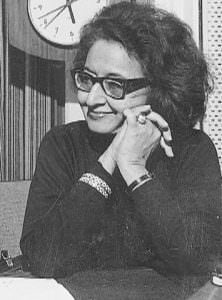
Qurralutain Hyder
Popularly known as Ainee Apa, Qurratulain Hyder was a short story writer, Urdu novelist, an educationist and a journalist. Born in 1927 in Aligarh, Qurratulain came from a family of writers and intellects. She was educated at Isabella Thoburn University in Lucknow. A highly acclaimed name in the world of literature, Qurratulain Hyder has a series of literary works to her name. In her works, she portrayed women characters as capable as men; but lacking the opportunities to excel equally. She managed to change perceptions regarding gender stereotypes through her writings. This is what defines Qurratulain Hyder as a strong feminist figure. She was often compared to her contemporaries Milan Kundera and Gabriel García Márquez, in terms of her literary vision and excellence.
Qurratulain is known to be one of the most prominent female names in the literary world. She is celebrated as one of the pioneers of women representation in literature. Through her works, Qurratulain portrayed the fate of Muslims of India before, during and after the partition. Qurratulain’s most notable work is Aag Ka Duriya (River of Fire). Her other works include Mere Bhi Sanam Khane, Safina-e-Gham-e-Dil, Patjhar ki Awaz (The Voice of Autumn), Raushni Ki Raftar (The Speed of Light), Chaye Ke Bagh (Tea Plantations), Kar e Jahan Daraz Hai, Gardish e Rang e Chaman, Aakhir e Shab kay Hamsafar, Chandni Begum, among others. Her short novels Dilruba, Sita Haran and Agle Janam Mohe Bitiya Na Kijo explore gender injustice in the sub-continental context.
Also Read: Playing With Fire: Remembering Qurratulain Hyder
3. Rashid Jahan
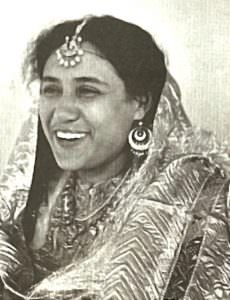
Rashid Jahan
Born in Aligarh in 1905, Rashid Jahan was born to a father – Sheikh Abdullah – who was the pioneer of women’s education in India, as an Urdu language writer. She penned short stories and plays. Jahan got her early education from the Aligarh Muslim University and later joined the Isabella Thoburn College in Lucknow in 1921. Though she trained as a gynaecologist, Rashid Jahan had a strong interest in writing short stories. She published Angaaray in 1931 which got caught in a lot of controversies. Angaaray was a collection of short stories that talked about the struggles of women in a patriarchal society, double standards of clerics and the inequalities in the society.
She penned these stories along with Sajjad Zaheer, Sahibzada Mahmuduzaffar and Ahmed Ali. Two of the stories she wrote for Angaaray were Parde Ke Peeche and Dilli ki Sair. Both talked about male privilege and the status and struggles of women in a male-dominated society. Rashid Jahan is considered as one of the most prominent feminist figures in Urdu literature. She played a vital role in representing women in the world of Urdu literature. Rashid Jahan’s works and writings contributed a lot in educating the masses on patriarchy. Though she faced a lot of criticism from orthodox Islamic segments of the Indian society, it did not deter her from her mission to raise her voice against patriarchal structures.
4. Rokeya Sakhawat Hossain
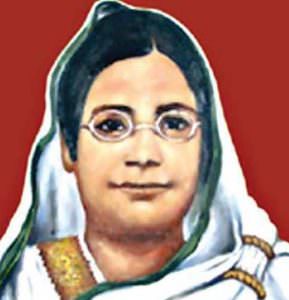
Rokeya Sakhawat Hussain
Born in 1880, Begum Rokeya Sakhawat Hossain or Begum Rokeya – as she was more commonly known – belonged from Bengal and is one of the most prominent feminist figures in the country’s history. Begum Rokeya is considered to be the pioneer of women right’s movement in Bengal. A writer, philosopher, educationist, activist and feminist, Begum Rokeya has a long-lived legacy when it comes to advocating women’s rights through her works and writings. Her name was placed in BBC’s list of Greatest Bengalis of all Time in 2004. Begum Rokeya used her writings to promote gender equality. Through her novels, poems, short stories, science fiction, satires, treatises, and essays, she implied that men and women must be given equal rights and representation on all fronts. This was a very new idea at that time. She believed that the reason why women did not have equal rights and representation was the lack of education.
Amidst a lot of criticism, Begum Rokeya founded the first ever school in Bengal for girls. She founded the Muslim Women’s Association in 1916. This organization fought for the rights of women to get educated and employed. Her most notable works include Sultana’s Dream. Years ahead of her time, Begum Rokeya’s utopian feminist novel spoke of a world where gender roles were reversed and women were the rulers. The novel also talks about technological advancements and countered popular gender stereotypes with logic and reasoning. Begum’s other works include Pipasha, Motichur, Padmarag, Oborodhbashini, Boligarto, Narir Adhikar, God Gives, Man Robs, Education Ideals for the Modern Indian Girl and more. She also wrote for different publications including Saogat, Mahammadi, Nabaprabha, Mahila, The Mussalman among others. A prominent feminist figure, Begum Rokeya went against the patriarchal mindset of the society and took initiatives to educate women in the region. She was a vocal advocate of women’s rights and worked throughout her life to fight for equal rights of men and women.
5. Shah Bano
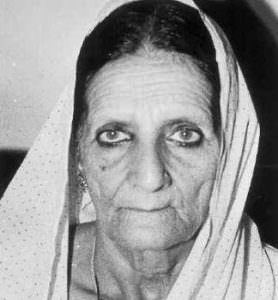
Indian Muslim Feminists – Shah Bano
A mother of five from Indore, Madhya Pradesh, Shah Bano is most famously known due to the Mohd. Ahmed Khan v. Shah Bano Begum (1985 SCR (3) 844) or the Shah Bano case – as it is more commonly known. This case is one of the most controversial maintenance lawsuits in the history of Indian judiciary. Shah Bano fought her case in the court to demand alimony from her estranged husband and in the process came across harsh criticism from orthodox Islamic segments. However, she stood by her claims and eventually won the case which paved the foundation for similar future cases as well.
Shah Bano, a Muslim woman, was married to a well-to-do advocate named Mohammad Ahmed Khan in 1932. The marriage resulted in five children. After 14 years of marriage, Khan married for the second time and lived with both his wives for a while. However, later when Shah Bano was 62-year-old, Khan sent her children and her away, promising a monthly alimony.
However, in 1978 Khan stopped giving her the ₹200 per month alimony that she was promised. Shah Bano took this matter to court and filed a case against her ex-husband under section 125 of the Code of Criminal Procedure. Shah Bano demanded a monthly maintenance of ₹500 from her husband for herself and her husband. On November 1978, Khan divorced Shah Bano under Islamic law and claimed in court that she is no longer his responsibility. He will only pay the amount promised to her in the start of the marriage (haq mehr). Shah Bano’s case, at this point, became an Islamic and national issue. The court’s final decision was that Khan will have to provide maintenance to Shah Bano. This decision was backed up by Quranic teachings which obligated a husband to provide for his wife and children who cannot do it on their own. Shah Bano is considered a feminist figure in the Indian history as she fought against the orthodox phenomena in the Indian society. Her case was a foundation stone for similar cases to come in the future. It was an important achievement, amidst the controversies and criticism, for the rights of women in India.
6. Wajida Tabassum
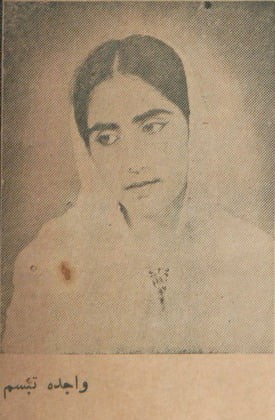
Wajida Tabassum
Born in Amravati, Maharashtra, Wajida Tabassum was an Urdu language writer of fiction and songs. Wajida received a degree in Urdu language from Osmania University. She began writing books after moving to Hyderabad. Her writings were about the background of the luxurious lifestyles of Hyderabadi elites. She experimented with the different styles of Urdu language writings. Wajida’s literary works were considered erotic as they portrayed the rich and lavish lives of the nawabs of Hyderabad. She started writing in the monthly publication called Beeswin Sadi (Twentieth Century) and gained critical acclaim for her imaginative portrayal of a particular class. In 1960, her collection of stories was published under the name of Shahr-e Mamnu (Forbidden City). These gained Wajida nationwide acclaim and her reader base also grew exponentially.
She was compared to Ismat Chugtai in terms of her writing styles. Her bold and distinctive literary works also gained some controversies and criticism. Her erotic works including Nath Ka Bojh (Burden of the Nosering), Haur Upar (A Little Higher) and Nath Utarwai (Removal of the Nosering) were controversial due to their bold content. Her other notable works include Utran Teh Khana, Kaise Samjhaoon, Phul Khilne Do, Zakhme-e Dil aur Mahak, aur Mahak,a and Zar Zan Zamin among others. Wajida Tabassum set a distinctive arena for women in the field of Urdu literature. She presented a different way of writing especially for female writers. Wajida is considered to be a feminist figure in the literary world due to her works that explore female sexuality.
This is in no way an exhaustive list. If you think we missed out on important Indian Muslim feminists, please tell us in the comments section. We’d love to do a Part 2 of Indian Muslim Feminists.
Featured Image Credit: Sadaf Jaffar, “The Quilt”
About the author(s)
A Pakistani journalist and Culture & Gender scholar at the University of Sydney, Amna Nasir considers herself a hard-core feminist. She is a travel enthusiast and expresses herself through painting, sketching, photography and writing. As clichéd as it may sound, Amna believes in equality of all beings irrespective of their background, colour, gender, religion or ethnicity.





Hi,
Nice article . Please include Kamala Surayya(also know by names Madhavikutty or Kamala Das too) in Part2.
Attia Hosain,author of’ Sunlight on a broken column’ does not feature here…..?
my mother Tahera Hasan a feminist was a Masters in economics from Aligarh University in 1954 she was a well known Urdu newsreader in All India Radio New Delhi, Moscow radio and Radio Kashmir. later she translated books on education into Urdu like the famous Totto Chan and stories by Ramanujan and Mahashweta Devi published by NBT.
Well done. Enjoyed reading this.
Great article. I’m working on a book about Ismat Chughtai at the moment. Also I noticed the cover art is my drawing. It was for a project on graphic art at Harvard’s Center for Middle Eastern Studies Outreach Center. I haven’t thought about it in years. I’m curious, how did you find it?
Dear Sadaf, thanks you for flagging. We have updated the image credits. We found it here: https://bokcenter.harvard.edu/blog/drawing-words-and-writing-pictures-virtual-tour
Great post, other figures would include Begum Sharifa Hamid Ali, who was head of the All Indai Women’s Conference and the All India Muslim Women’s Conference and drafted the model nikahnama on gender equal lines in 1940. Also Anis Kidwai, later Rajya Sabha MP, who was involved with rescuing abducted women and resettling refugees in the 1947 Delhi and wrote a fantastic account of her time, Azadi ki Chaon Main. Kulsoom Sayani and her work on adult literacy, particularly for women in Bombay. Also Begum Qudsia Aizaz Rasul, the leader of the Muslim LEague in the Constituent Assembly and someone who wore men’s clothers when playing cricket in parliament.